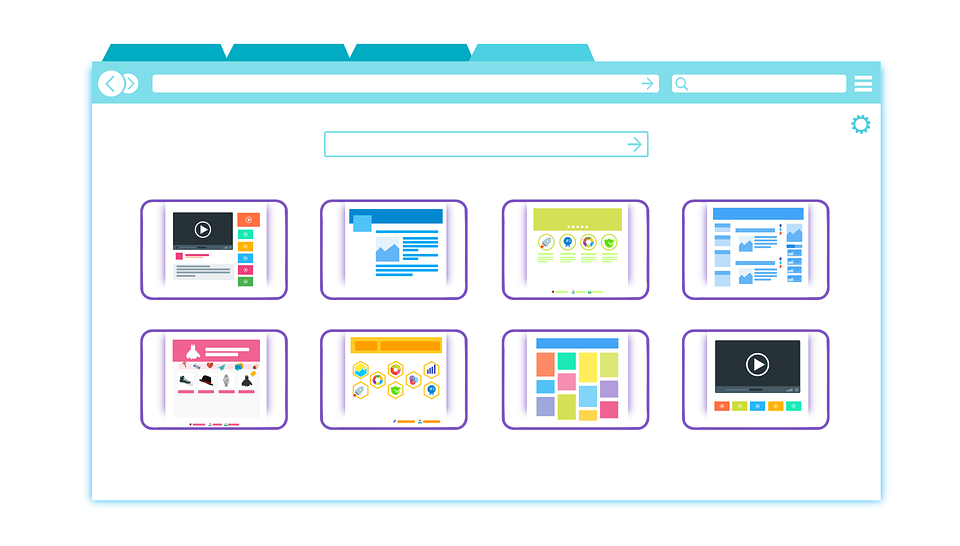
Image via Pixino
It’s no secret that Facebook is the premier online advertising tool for businesses. Rightfully so, Facebook’s advertising platform makes it simple for marketers to conduct granular searches for an ideal target audience. With this useful function, the task of creating beautiful ads is entirely left up to your prerogative and ability, or you can opt for some of the tools that can help you with dynamic creative.
Frankly, advertising on Facebook isn’t as convenient as it may initially seem. There is a wide range of obstacles modern advertisers face, even on Facebook’s advanced platform. One of the primary issues advertisers face is building ads that actually work. Now, how is the word “work” defined in this context?
You guessed it. I am simply referring to the complexity of encouraging people to view, engage, and click on your ads. Otherwise, what’s the point of creating business ads in the first place?
So, how can you develop outstanding ads that capture the attention of your target audience? What are some creative and innovative ways you can design your ads to achieve optimal results? Overall, how can you get the most return for your advertising investment?
Read on to learn how you can create stellar ads that will actually work for your business.
Coordinate Your Ads with Your Campaign’s Landing Page
When you are creating your Facebook ads, it’s essential to coordinate your ads to the content of your campaign’s landing page for two primary reasons.
First, you’ll receive a substantially higher Ad Relevance rating, giving you the incentive to pay less per click. Facebook Ads are starting to become more competitive, and its CPC rates are steadily rising as a result.
Next, align your ads with your landing pages can boost your conversion rate. When interested buyers click on one of your ads to make a purchase, they expect to receive exactly what they were promised in the ad. If this happens, your brand and your website can gain credibility with your customers who will likely do business with you again.
With the number of online scams spreading throughout the internet, trust is a determining factor to influence prospective customers to provide you with their payment information. Besides, the alignment of your ads and landing pages can effectively decrease your shopping cart drop-off rates.
Constantly Conduct Rigorous Experiments
Needless to say, all businesses are different. Each business has their own target audience, voice, and messages that they want to convey. Hence, you will only waste your time if you rely on industry research and experiments conducted by other businesses that attempt to inform you of how you should run your ad campaigns.
Try conducting your own experiments to generate marketing data you can use to analyze the advertising techniques that work for your business and the ones that don’t. One popular method of accomplishing this is to simply split test your ads.
You can begin by taking your best ad, making copies of it, and changing the headlines of each ad. When you’re finished, you’ll now have multiple ads to experiment with. During your experiment, record important data and metrics such as likes, shares, views, and comments to determine which ad receives the best response.
Once your first experiment is finished, move on to another element such as descriptions and images. Make sure you are testing one element at a time to gain the information you need to construct the perfect ad.
Invest in Video Ads
If you are creating fruitless ads that aren’t performing well on Facebook, it may be time to implement an innovative strategy to boost your ROI and conversion rates.
Investing in video ads is a perfect method of capturing the attention of your audience, and this option gives you the best opportunity to present a timely message in a creative fashion. Facebook allows businesses to create stunning video ads with their custom software, but it can initially be difficult brainstorming quality video ideas that will make your audience bow down and worship your products or services.
If you are struggling with the concept of producing the perfect video ad, take a look at Nike’s video ads for inspiration.
Nike Facebook Ad Video Embed Code
Nike’s video ads carry a motivational tone that successfully inspires their customers to purchase their products. Although Nike has a variety of celebrities at their disposal to market their products in these ads, you can craft an exceptional video and by just following this simple marketing principle: keep all of your ads relevant to your niche.
If you are running a barista, it doesn’t make much sense to create a video ad that’s full of promotions and no substance. What do individuals in your niche crave? For a barista, this obviously would be coffee.
Therefore, if you are promoting a free tasting event at your local barista, create a video ad that displays people drinking and enjoying your coffee and include a call to action at the end of the video. If a single picture is worth a thousand words, then a video should give you unlimited potential to spread your message to your audience.
Nike does this by displaying their products and allowing viewers to make their own decision about continuing with a purchase at the end of the video. Overall, investing in video ads are extremely efficacious for reaching your target audience. Nonetheless, be mindful that your video ads should tell your story and subtly promote your products or services.
Use Facebook Targeting to Your Ad Copy’s Advantage
When it comes to advertising your products or services online, it can be tempting to write your ad copy like you’re giving a speech on a stage. Though, if you want to be effective, create well-written ads that are personable. This means writing ads copy as if you’re selling to one person, and one person only.
This single individual is the person that you’ll have to convince to purchase your goods. Just as if you were a salesperson, you need to prioritize this person’s needs. Of course, your content has to be universal if it’s displayed on your website. However, Facebook gives advertisers the ability to narrow down granular audiences.
For example, if you are selling sportswear but want to create a message just for women, you can target your ads to women who are under 35 that live in the United States and are interested in exercising and fitness. Once you have your specific target audience, you can develop an ad that speaks directly to them.
Ensure That Your Ad Copy Matches Your Visuals
Most smaller business, usually in the B2B section, typically don’t have access to a ton of visuals for their social media networks. Consequently, when it’s time to create an ad, these businesses often scramble to find a last-minute image to accompany their campaign.
This can lead to creating an ad that mismatched. If your ad copy doesn’t align with your image, your audience will have no idea of what you’re advertising and your ad will be wasted.
Starbucks regularly posts captivating visuals that complement their ads. In their signature #StarbucksDate campaign ad, the copy mentioned that anyone who attended the event will receive a French press Caffe Verona with a delicious chocolate brownie. Do you know what images the company used in this ad?
You’re correct. The ad contained images of the French press Caffe Verona with the delicious chocolate brownie. By including a perfect visual in this ad campaign, Starbucks reminded its audience of what they would obtain if they attended their event, resulting in an outstanding ad.
Keep Your Call to Action Very Clear
The most effective Facebook ads have a clear and concise objective. Are you trying to obtain a lead, sell a product, or increase your brand awareness? Without this, your audience will see your ad, but they won’t know what to do or how to engage it.
Society6 sells and advertises custom cell phone cases, and their ads show the perfect example of how a call to action should be displayed.
This ad is much more than a beautiful depiction of quality iPhone cases; the ad contains a simple call to action that’s succinct and easily accessible to Facebook users. Once the image catches the eye of a prospective user, the only thing they will have to do is click “shop now” and they can move forward with their purchase.
Focus on the Offer, Not the Copy
Let’s begin this section by observing a quote left to us by the late Gary Halbert, one of the most brilliant advertisers of the 20th century.
“Strong copy will not overcome a weak offer but…in many cases, a strong offer will succeed in spite of weak copy written by marketing morons.”
In the broadest sense, Halbert communicated that a good offer will succeed on its own. This isn’t to say that excellent copy isn’t integral to an ad’s success, but the offer should always be attractive to be truly effective.
Let’s take a look at some examples.
Offer #1
Offer #2
Both of these offers are great, but there is only one offer that truly stands out. Which is it? You would be correct at selecting the second offer, and here’s why.
Although the first offer promises 50% off a women hoodie, the second offer will obviously elicit a more emotional response from its audience. Hence, it’s a very bankable offer. If you’re a dog lover, you will likely purchase the shirt just to feed the shelter dogs without realizing you just bought a shirt.
This isn’t to say that you should begin your own dog shelter, but you’ll only maximize your ad’s potential if you can sweeten up your offer. The best method of doing so is to sell an item without your audience realizing you are.
The fundamental lesson in all of this is to create compelling ads that don’t directly sell your products. Allow your offer to speak for itself, you’ll successfully entice your audience to transform themselves into valuable leads for your business.
About the author:
Rolando Herrera
VP of Marketing for Insignia SEO (Co-Founder)
Business Website: https://insigniaseo.com/
Personal Website: http://rolandolherrera.com/
I’m a marketing executive and entrepreneur that enjoys helping people and businesses grow their concepts. I’ve worked in corporate for Disney, Boston Market, and many others and helped them deliver their brands to consumers. I’m currently a co-founder of a marketing agency, Insignia SEO, with business in over 50 cities in the US. My expertise is in Digital Marketing strategies that use Organic Marketing, Content Marketing, Paid Search Advertising, and Social Media as the delivery of information to the consumer. I have over 10 years of experience in the Tech and Digital Marketing space and I’m passionate about the fruition of a concept in the marketplace.















 Source:
Source: 





 Kenneth Evans is a Content Marketing Strategist for Top App Development Companies, a research platform for top app development companies in USA, UK, India, UAE, Australia and around the world. He has been contributing to various blogging platforms and Forums.
Kenneth Evans is a Content Marketing Strategist for Top App Development Companies, a research platform for top app development companies in USA, UK, India, UAE, Australia and around the world. He has been contributing to various blogging platforms and Forums.









